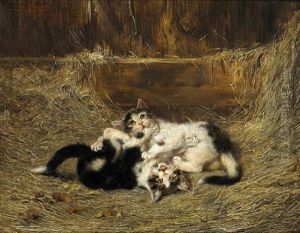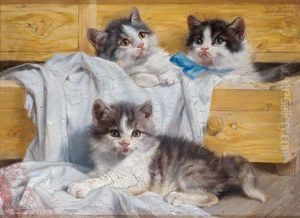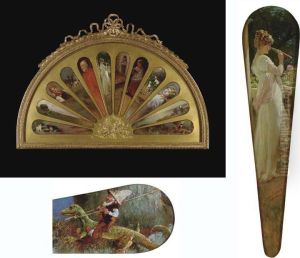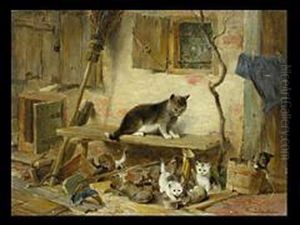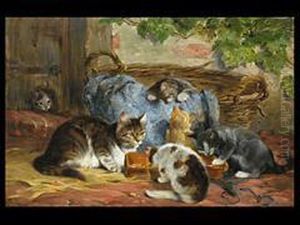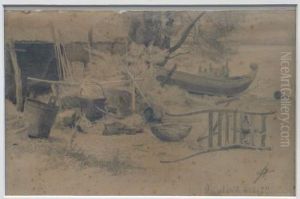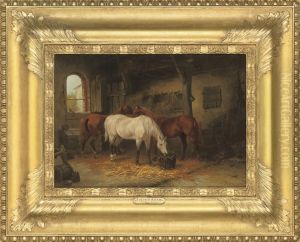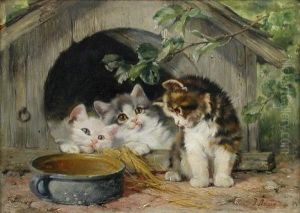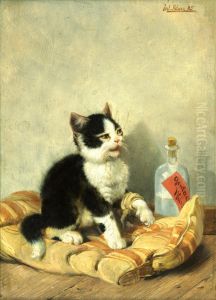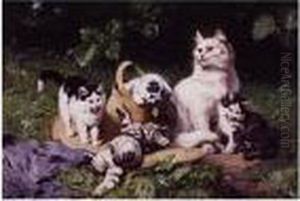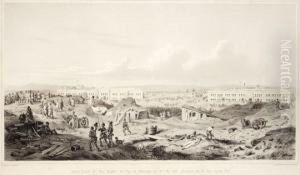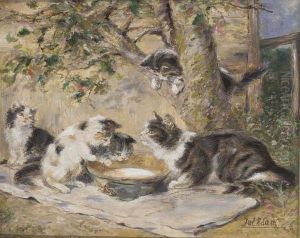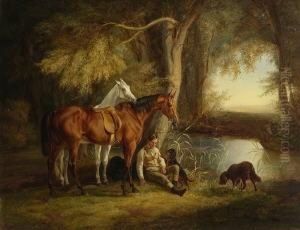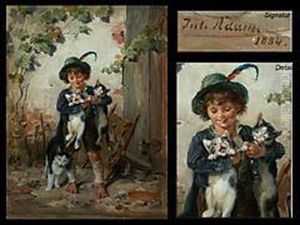Julius I Adam Paintings
Julius I Adam was a German painter, born in 1852 in Munich, Bavaria. He was part of a family deeply entrenched in the art world, which naturally cultivated his path towards becoming an artist. His father, Benno Adam, was also a painter, known for his work with animal subjects, particularly horses. This familial background not only provided Julius with an environment rich in artistic influence but also shaped his future specialization in painting animals, especially cats.
Adam's early life was marked by comprehensive training in the arts. He initially studied under his father and his uncles, Franz and Heinrich Adam, who were also accomplished artists. This provided him with a strong foundation in the traditional techniques of painting. However, Julius Adam's style and subjects gradually evolved as he sought to carve out his own niche within the art world. His penchant for depicting cats in various activities and environments became his signature theme, earning him the nickname 'Cat Adam'.
In addition to his fascination with felines, Adam also produced works featuring dogs, horses, and landscapes. However, it was his cat paintings that garnered the most attention and admiration, characterized by their lifelike portrayal and the ability to capture the nuanced behaviors and personalities of his subjects. His talent in rendering the texture of fur and the play of light and shadow brought his animal subjects to life, making his works highly sought after by collectors and animal lovers alike.
Throughout his career, Julius Adam participated in numerous exhibitions, both in Germany and abroad, establishing a reputation as a leading animal painter of his time. His work was well-received for its detail, realism, and charm, and he remained active in the art scene until his death in 1913.
Despite the passage of time, Julius I Adam's paintings continue to be celebrated for their technical skill and heartfelt depiction of animals. His legacy lives on in museums and private collections worldwide, where his ability to capture the essence and spirit of his feline subjects continues to enchant new generations of art enthusiasts.
